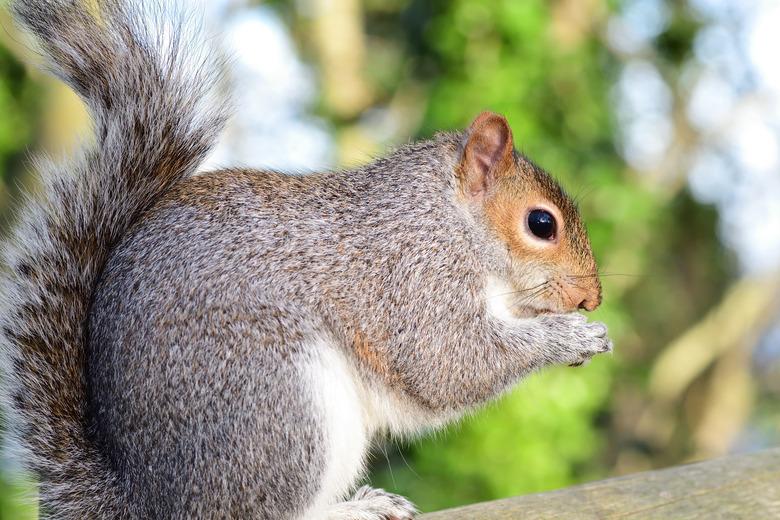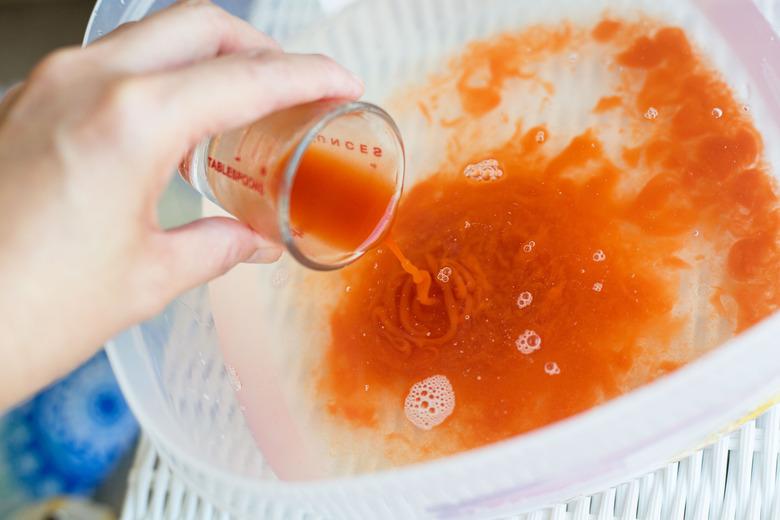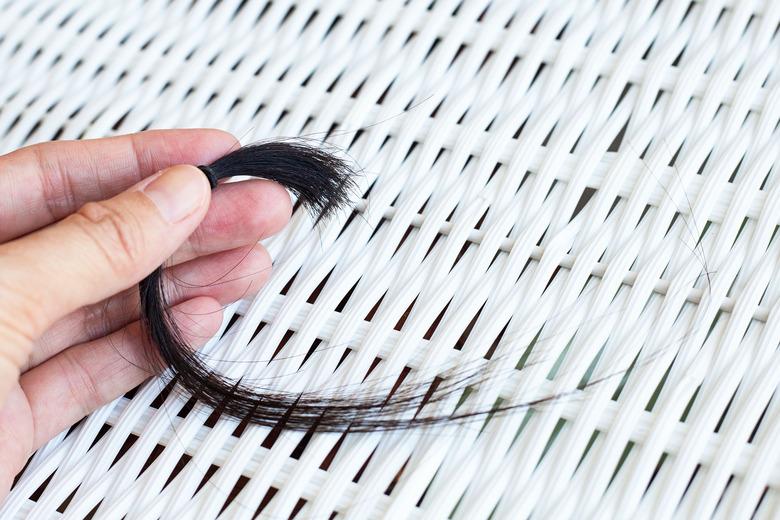How To Make Homemade Squirrel Repellent
We may receive a commission on purchases made from links.
Commercial squirrel repellents depend on scents and flavors that are repugnant to the pests, but you can create your own inexpensive, nontoxic homemade repellent using a similar approach. Keep in mind that repellents don't prevent all squirrel problems, and some squirrels may still brave the area to feast on your tomatoes or chase the birds away from your feeder. Repellents deliver the best results when used simultaneously with other tactics, such as exclusion, to help minimize the number of squirrels in your yard.
How to Make Squirrel Repellent Spray
1. Prepare for Battle
Put on disposable gloves as well as eye protection because you're going to be mixing up, handling, and applying hot pepper products.
2. Combine the Ingredients
Combine 1 teaspoon mild non-degreasing dish soap, one 5-ounce bottle of hot pepper sauce, and 1 gallon of warm water in a large storage container. Stir the ingredients together until they are fully combined.
3. Pour and Label
Pour the mixture into a clean spray bottle that hasn't previously held any harmful chemicals. Label the spray bottle with the date and the contents.
4. Apply the Pepper Spray
Spray a thin layer of the homemade pepper repellent on plants or in other areas where squirrels are a nuisance, but avoid using it on bird seed or feeders as it may irritate birds' eyes. Coat all surfaces thoroughly. Test the spray on a small spot first to ensure it doesn't damage the plant or leave stains on outdoor surfaces. Reapply the spray every two or three days or after heavy rainfall and wash your hands thoroughly with soap and warm water after each application.
How to Make Repellent Bags
1. Gather Some Hair
Collect human hair from visits to your personal salon or barber or pet hair from grooming sessions with your dog, which carries the scent of this natural squirrel predator and may help repel squirrels. Gather enough hair to fill several small bags.
2. Create the Hair Bags
Cut an 8- to 10-inch square from a piece of cheesecloth. Place a handful of hair in the center of the cheesecloth and gather up the edges of the cloth to enclose the hair. Tie a piece of string around the gathered cloth to hold it closed, leaving a loop for hanging.
3. Distribute the Hair Bags
Hang the bags around garden beds, on fence posts, or near bird feeders. Alternatively, set the bags on the ground or try using dog hair as garden mulch in areas where squirrels are active. Replace the mulch or bags periodically as their effectiveness wanes.
Try an Integrated Approach
Try an Integrated Approach
Combine the use of homemade squirrel repellents with one or more additional techniques for managing backyard squirrels:
- Change up your birdseed mix to make it less desirable to squirrels. These critters don't care for safflower seed, which is preferred by chickadees, cardinals, and titmice. Nor are squirrels fans of nyjer thistle seed, preferred by goldfinches. Choose mixes composed predominantly of proso millet for your house finches and mourning doves. Squirrels aren't crazy about that one either.
- Placing a handful of coffee grounds or red pepper flakes in the ground as you plant may prevent squirrels from digging up plant roots and bulbs. You can also sprinkle the grounds or pepper around plants already in the ground.
- Discourage squirrels from intruding upon your property by hanging bird feeders with baffles to keep the squirrels out, minimizing food left outdoors, and covering newly planted areas with chicken wire to minimize digging.
- If you can confine him to your yard with either traditional or invisible fencing, turn your dog loose outside whenever possible while you are home. Even the wimpiest canine will raise a ruckus and pester squirrels when they come around. Dogs aren't usually very good at catching squirrels, but they can definitely annoy the critters enough to chase them away.






